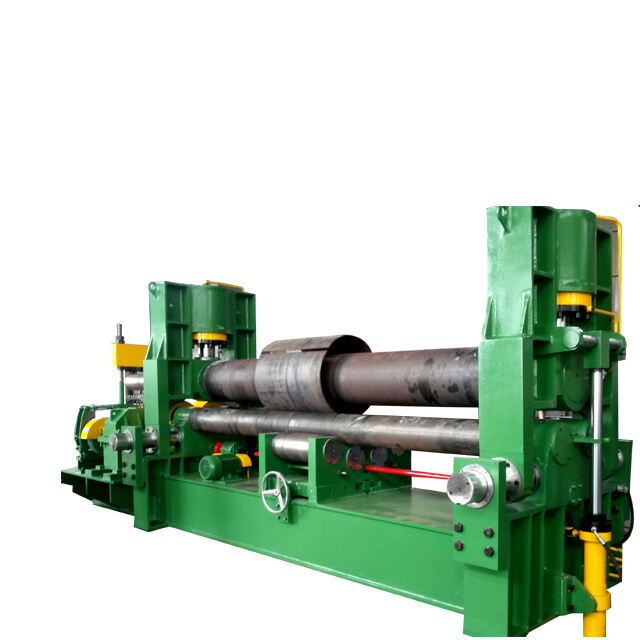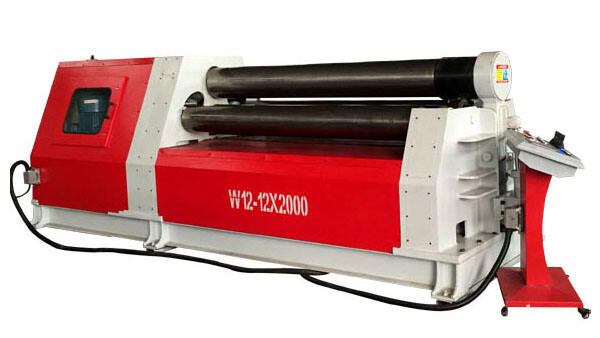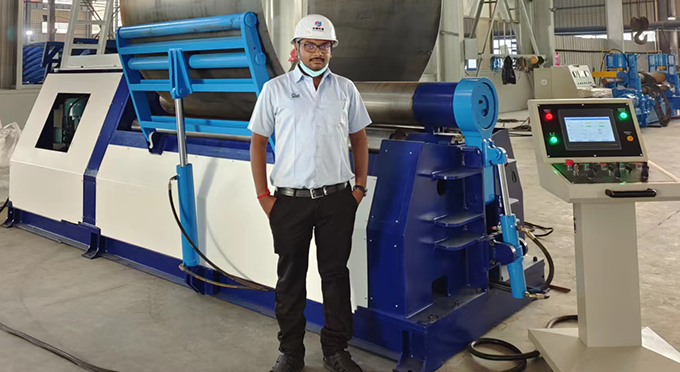The Critical Role of Plate Rolling Machines in Modern Shipbuilding
Enabling Complex Hull Designs
Plate rollers play a crucial role in the development of exciting new hull shapes that increase the performance of the vessels. These machines make it possible make accurate adjustments to the curvature section of steel plates, which is essential for the production of the ship hull to reducing streamlines of the hull and increase hydrodynamic effectiveness. Allowing for sharper and more precise bends, this equipment is part of the increased design flexibility of the customisable shipbuilding process, every ship can be tailored to perform. Moreover, the accuracy provided by plate rolling machines reduces waste of materials, which will help align shipbuilding practice to sustainability focus.
Meeting Naval Architecture Standards
Naval Architecture standards are important in any shipyard, and plate rolling machines are an indispensable factor in accomplishing these stringent regulations. These also allow for the rolled plates to be machined to dimensional tolerances and mechanical properties required for such demanding oceanic conditions. Thanks to the high tech plate rolling machine tooling they use for the bending of shapes, shipbuilders also achieve standards such as ISO and ABS. It is very important that these standard, which is both guidelines and safety net against harsh maritime environment that can pose danger to employees, ship and customer whom need to trust the ship to be durable and having an acceptable vessel life.
Types of Plate Rolling Machines Transforming Maritime Construction
Hydraulic Plate Bending Machines for Precision Forming
Marine Hydraulic Plate Bending Machines Marine hydraulic plate bending machines become essential for marine construction where high precision of forming thick metal plates is required. This level of accuracy is critical for the assembly of complex ship hull structures where it all has to fit. Its multi-radius forming machines are designed for bending a wide array of materials, so you can process different thicknesses, grades and materials in the shipbuilding industry. The hydraulic pump of these units helps achieve uniform pressure through the full length of the plate, which facilitates uniform and symmetric bending ensuring better quality bended sheets/products. These units reduce stress and increase safety in high demand applications by operating pressure. This setup is essential to realize the curve one wishes without losing the integrity of the matter.
Heavy-Duty Four-Roll Systems for Submarine Components
Large scale, four roll systems designed to withstand the high demands of subsea component manufacturing. There is a big need for strong, large plates and they have to be formed regularly and efficiently with these systems. The stability and accuracy provided by four-roll machines means these vital sections do not lose their shape or strength under water. Improved stability of the 4-roll systems translates into longer life for submarines and is a prerequisite for the safe construction of underwater crafts. As they can process heavy plates, submarines are built with attention to high durability contributing to the availability of these key naval assets.
CNC-Controlled Bending Solutions for Automated Production
Including CNC controlled plate bending machine optimizes the process of shipbuilding and automated the production efficiency. The accuracy and repeatability of these machines eliminates the human error allowing quick and programmable changes for Machining batches of parts of varying sizes. This degree of automation has greatly facilitated the work and saved time and cost. Furthermore, the use of CNC technology in plate bending makes it possible to achieve excellent production rates and precision, making plate forming processes in shipyards a new one. With its ability to automate position changes and free itself of complex templates, CNC has become an invaluable tool, continuing to push the boundaries of shipbuilding today by allowing for designs and ideas to be tested and implemented with unparalleled precision and speed.
Shipbuilding Applications Across Vessel Categories
Commercial Cargo Ships and Oil Tankers
Commercial cargo ships are developed with the help of plate rolling machines, and plate rolling machines also provide a important guarantee for improving the operating efficiency. The ships must incorporate accurate manufacturing methods to transport different types of cargo and to increase load capacity. The blockade of the control volume to the outside that is realised in the domain of oil tankers requires special hull forms which can be formed by advanced plate rolling technologies that provide the geometric shaping by flexibility that is necessary for such application. With the increasing requirement of bigger vessels, there is a demand for more heavy-duty rolling machines capable of meeting the complex requirements of today's shipbuilding industry. Such growth highlights the need to invest in equipment that is able to build bigger and more efficient ships in order to service world trade.
Naval Warships and Coast Guard Cutters
High Stakes Materials- high materials and complex shapes are commonly used in naval ships and a plate rolling machine can easily produce these vessels. These are the machines that you need to have to create the strong, complicated frame work that provides the strength and protection you need for your ship. For Coast Guard cutters, design requirements are designed to provide the ability to improve vehicle handling and performance through the application of accurate plate bending. Constant competition amid the shipbuilding industry to adopt the latest rolling technologies that enable ship designs to evolve into something beyond customary bounds raising the bar on naval vessels, promoting the enhancement of military shows and maritime operations.
Specialized Fishing Vessels and Research Ships
Precision plate rolling can be very advantageous for purpose-built fishing boats. This really adds to both the productivity and performance of the boat as well as catering for certain types of fishing, neat maritime hi-fi. The same applies to the endeavour to build modern research vessels, which must be designed to measure in terms of the plate bending technique in order to meet the specific requirements for scientific exploration. The flexibility of plate rolling machines is of paramount importance, since it makes it possible to modify diameter and volume according to different vessel needs, thus turning the machines into a valuable tool when producing customised maritime applications with tight deadlines. This versatility allows to promote scientific discovery and is assisting in marine exploration.
Technological Advancements Driving Efficiency
Integration with Hydraulic Shearing Systems
Hydraulic shearing systems added to plate rolling machines represent a major advance in marine fabrication. This type of integration permits shear and bend to be carried out at the same time, with the result that the production time is reduced. This double function is of particular importance in industries requiring high accuracy and speed. Adhering to strict safety regulations, the c o mbined s y stem s guarantee a frantic and _running operation; for this reason, the construction and repair of large marine craft are now routine. This technological synergism is a real breakthrough for heavy-duty plate rolling machine builders.
Smart Manufacturing in Plate Rolling Operations
Intelligent manufacturing technology changes the face of rolling, allowing real time monitoring and adjusting to ensure precision quality. The use of metrics-based insight has driven efficiencies across production –an approach that the competitive shipbuilding and construction industry, in particular, can benefit from. The use of IoT in the plate rolling machines is leading to further advancements, which may increase efficiencies to levels never before experienced in marine construction. Not only this technology increase productivity, but the technology also establishes a new standard for accuracy in hydraulic plate bending machines.
Challenges and Future Developments in Marine Fabrication
Material Handling Limitations in Mega-Ship Construction
The difficulties of construction with oversized sheets of metal is one of the most constraining elements in building mega-ships. Management of such oversized materials requires the development of advanced techniques to protect the working site in terms of safety and environmental sustainability. Heavy Duty Plate Rolling and Bending Machine Manufacturers must have to respond to modern day rolling and handling technology to increase efficiency. Studies have shown that improvement in these handling methods can result in significant reduction in the production slowdowns and improvement in shop floor efficiency ([citation needed] study). As the size of ships increases, it will be more important to overcome these difficulties in order to meet construction deadlines and to remain competitive in the marketplace.
Emerging Trends in Automated Plate Forming
Automated plate forming in the shipbuilding industry The introduction of automated plate forming in shipbuilding represents a major milestone in the consolidation of robotics in marine construction. Greater levels of precision and efficiency, two attributes essential to today's shipbuilding requirements which are focused on meticulous precision. The challenge is that this change requires skills up gradation to handle and work with advanced CNC plate bending machines and four roll plate bending machines. Market predictions suggest that automation technologies will continue to gain in adoption, which highlights their relevance in future progress ([source needed]). These trends will form the basis of harnessing improved productivity, and ensuring that the marine construction industry can continue to grow in an ever more competitive market place.




